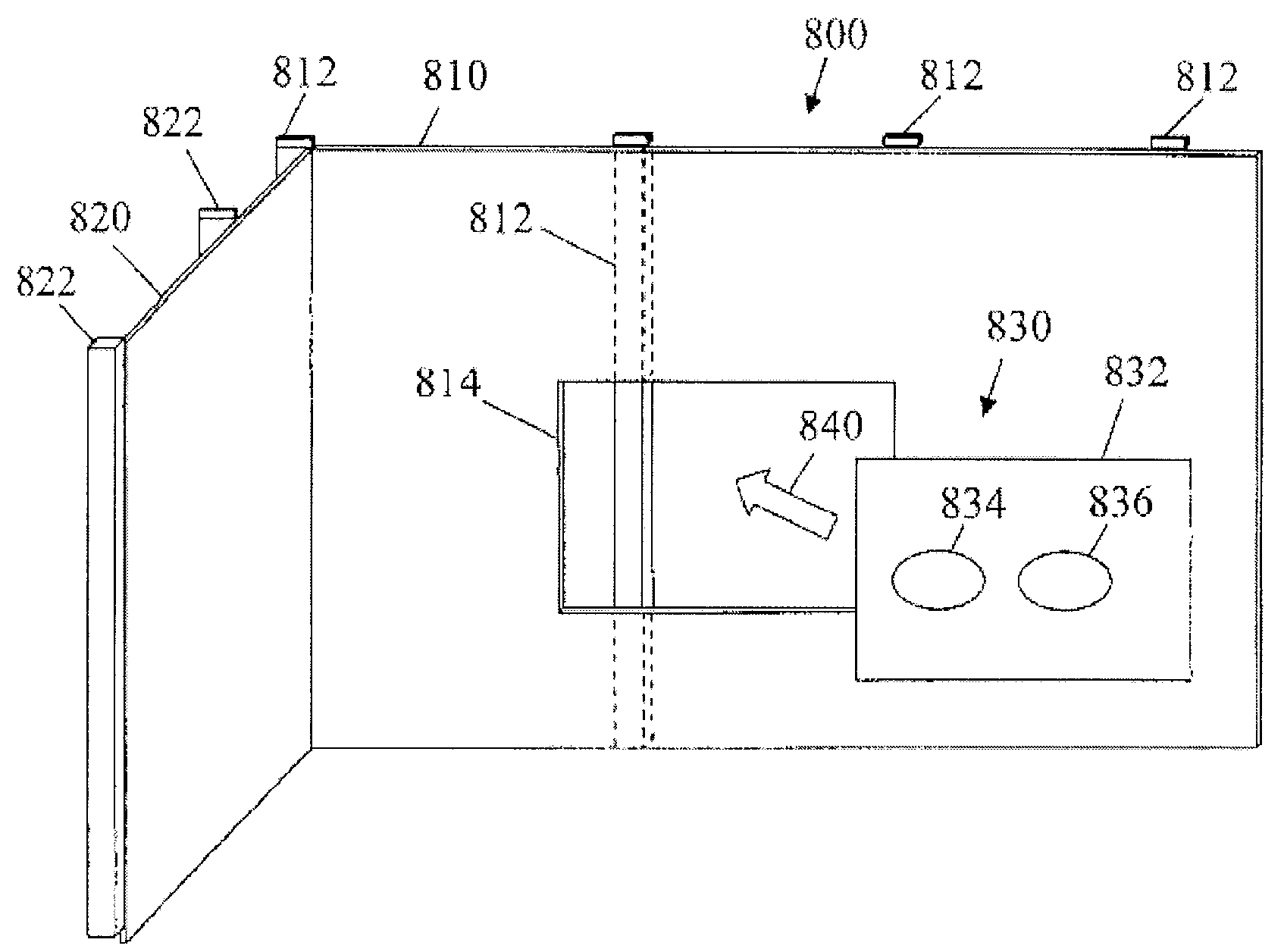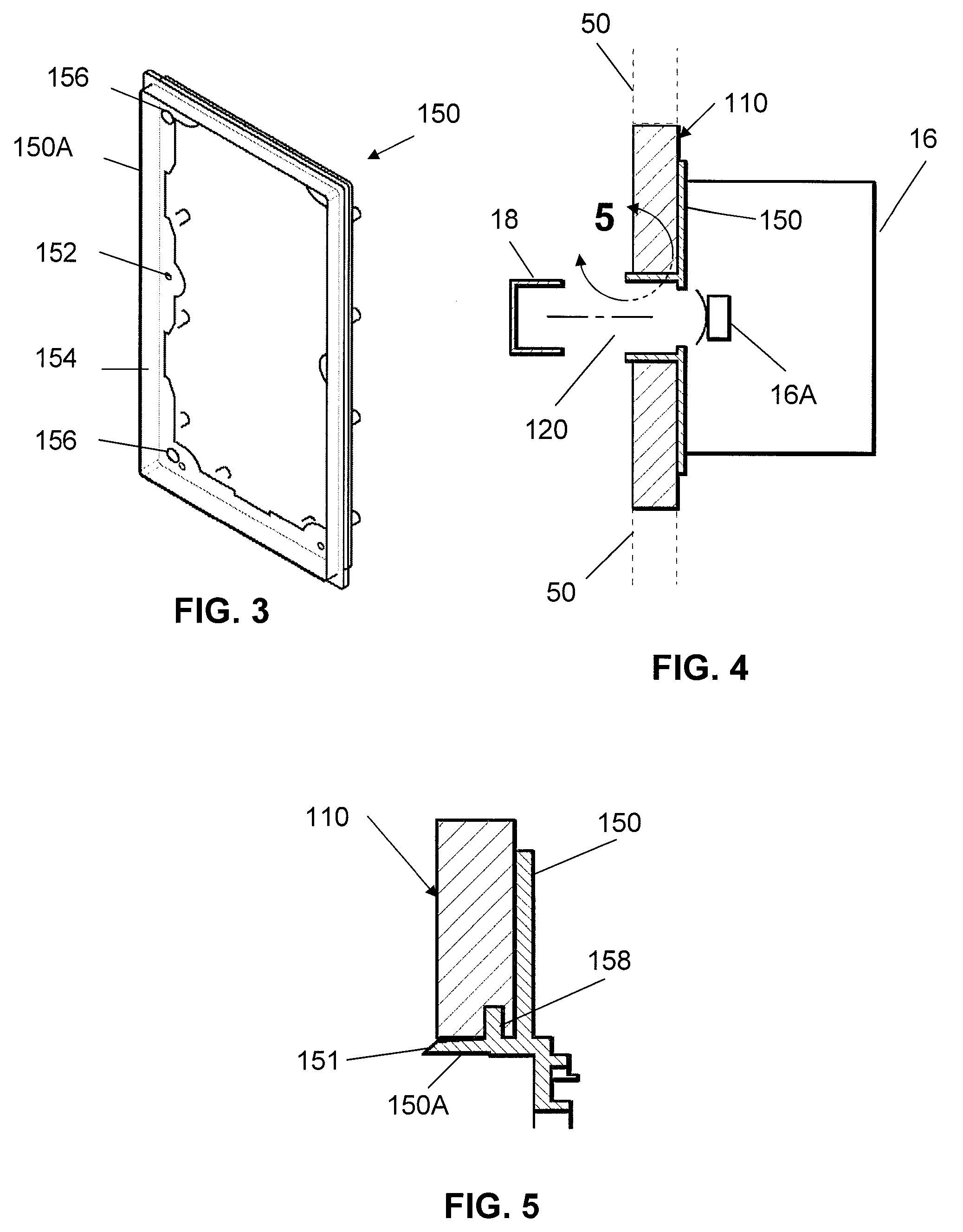Flush Mount Panels With Multiple Aligned Receiving Brackets
a technology of receiving brackets and flush mounts, which is applied in the direction of girders, electrical apparatus casings/cabinets/drawers, loudspeakers, etc., can solve the problems of ineffective mounting of components in positions other than along the ceiling joist, and the difficulty of arranging or evenly spacing multiple components, etc., to achieve the effect of convenient installation
- Summary
- Abstract
- Description
- Claims
- Application Information
AI Technical Summary
Benefits of technology
Problems solved by technology
Method used
Image
Examples
Embodiment Construction
[0040]In FIG. 2 a component mounting apparatus 100 generally includes a panel 110 with openings 120, 130, and 140. Each opening 120, 130, and 140, has a bracket 150, 160, and 170, and a spackle shield 155, 165, and 175, respectively. It should be appreciated that while each bracket is sized and dimensioned to hold a specific component, the brackets could be identical to one another to create a “universal bracketing system” that can hold components of various sizes.
[0041]Panel 110 is a piece of gypsum board, wood, plastic, or other material (or combination of materials) sufficiently strong to support a speaker or other desired component between two studs of a wall, or joists or other supports in a ceiling. Where plywood is used as the panel material, for example, the panel might be as thin as ¼″ (6.35 mm), but would more preferably measure at least ½″ (12.7 mm) or ⅜″ (19.05 mm). Preferred materials include wallboard, Medium Density Fiberboard (MDF), High Density Fiberboard (MDF), Acr...
PUM
 Login to View More
Login to View More Abstract
Description
Claims
Application Information
 Login to View More
Login to View More - R&D
- Intellectual Property
- Life Sciences
- Materials
- Tech Scout
- Unparalleled Data Quality
- Higher Quality Content
- 60% Fewer Hallucinations
Browse by: Latest US Patents, China's latest patents, Technical Efficacy Thesaurus, Application Domain, Technology Topic, Popular Technical Reports.
© 2025 PatSnap. All rights reserved.Legal|Privacy policy|Modern Slavery Act Transparency Statement|Sitemap|About US| Contact US: help@patsnap.com



